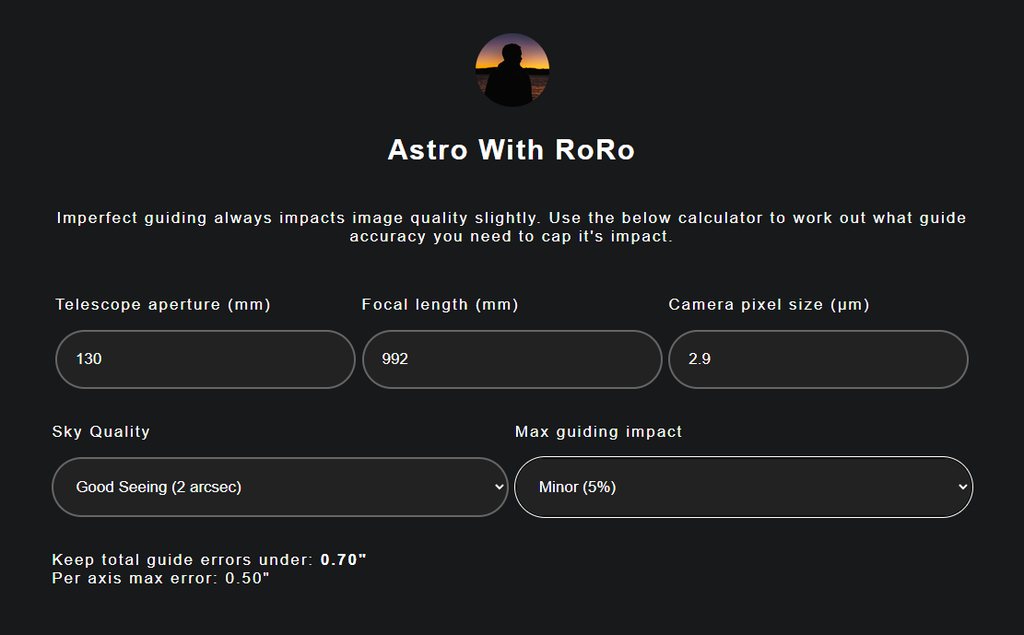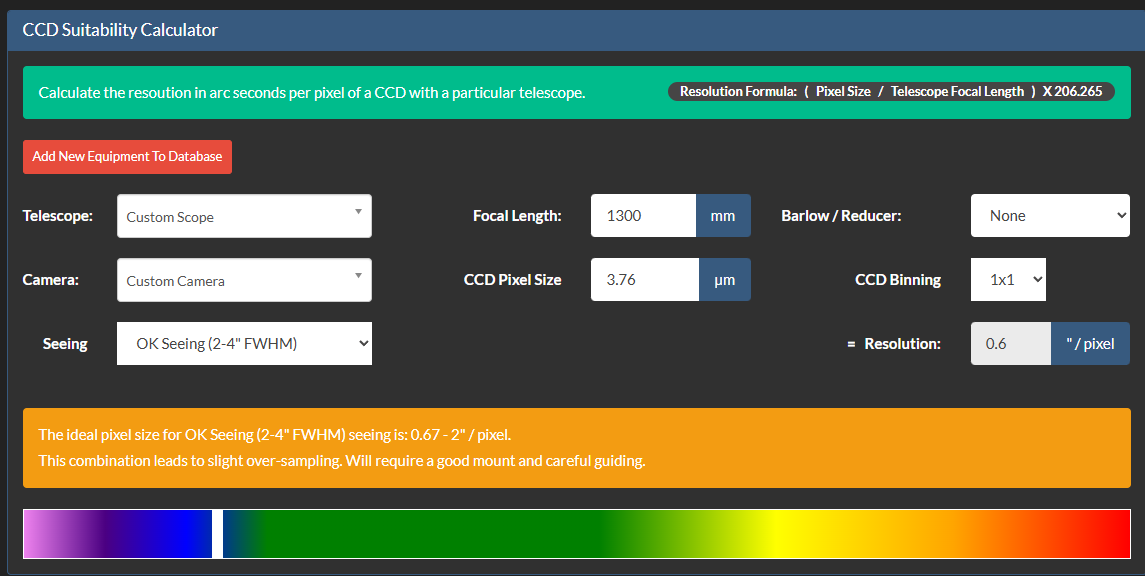I think I am mixing guiding performance and imaging sampling too much, and it is making me confused. I am going to write what I now understand and hopefully anyone who understand this better than I can correct any misunderstandings.
Image sampling, specifically for imaging, and less so for guiding however that could be important too...... Not discussed below
You can really only capture as much resolution/detail as the sky permits, regardless of your optics.
If your optics are good enough (usually this is a combination of aperture/focal length/optics quality/sensor size/pixel size. ..... Then your limiting factor is often "seeing"
Example: Lets use a scenario where seeing is limited to 3, then it would optimal for the image to match this as closely as possible, while trying to avoid over-sampling or too much under-sampling
Although seeing is variable all the time, for the sake of example, lets say with current seeing of 3 we roughly have "seeing" of 1 arc second per pixel.
If we have an imaging resolution (finer) than this we aren't receiving that signal anyway due to the seeing, and if we have imaging resolution higher (less fine) then we could be over-sampling and getting star bloat among other issues.
Until this string started, I had always looked at required guiding numbers for RMS being directly related only to the imaging train sample/resolution.
I now recognize a couple obvious things.
1. You cant guide any better than you can see
2. Guiding and Imagining is likely limited by seeing more often than not
3. The delta of having an RMS that is not optimal/perfect vs optimal/perfect RMS numbers is not nearly as big as I had originally feared.
(This site actually helped me sleep better last night
https://www.astrowithroro.com/guiding )
So I am going to take the same camera sensor with 3 different focal lengths while we have a seeing of (3) as examples
To calculate image scale it is generally accepted that that 206.3*pixel size / focal length gives the scale, ASI2600MC camera
300mm Focal Length = Pixel Scale of 2.58 (meaning the suggest half of this for target RMS guiding would be 1.29)
800mm Focal Length = Pixel Scale of 0.96 (meaning the suggest half of this for target RMS guiding would be 0.48)
2500mm Focal Length = Pixel Scale of 0.31 (meaning the suggest half of this for target RMS guiding would be 0.155)
General suggestions are that the RMS for guiding should be half of the Pixel Scale, which would mean the 300 and 800 seem reachable if you have a mid to high level mount, but the 2500mm version seems almost unreachable for many amateur AP tools.
But.... You only can guide as good as the sky/seeing permits, and being "off" of the target RMS does not mean the sky is falling (yes that's a small pun)
Example... If seeing is 3, then the real achieved Pixel Scale arriving to the sensor is more around 1 arc second per pixel (pixel scale of 1.0), this means optimal guiding in a seeing of 3 never needs to exceed 0.5 because... you can only see what you can see.
The seeing limited Pixel Scale doesn't care that the focal length 2500 or 25000 or anything else, because its seeing limited to around 1.0 pixel scale. I should note that if you are under-sampled you are throwing away details but doesnt have anything to do with guiding, its just the downside of having pixels that are bigger than needed as compared to your focal length, and this is pretty common with shorter focal length setups.
Continuing on.... Lets pretend I have a mid grade mount that still cant achieve 0.5 RMS with my guide scope/camera combo but I want to use a big bad 10 inch SCT with 2500mm focal length.
All is not lost, first remember my seeing is stuck at 3, so I only need guide as good as 1.0 divided in half so a target RMS of 0.5
And based on the fabulous calculator on
https://www.astrowithroro.com/guiding I could get an RMS of 0.95 and this would only negatively affect my image/star size by an estimated 5%. So even with 0.95RMS I can take reasonable images.
Not for this post, but I would argue that blurxterminator can fix that 5% in its sleep.
What I have learned for this gives me a lot of optimism for using my current gear to still get longer focal length images, and it also helps me stop obsessing about guiding numbers.
I can see where the lucky guy on top of a Chilean mountain with perfect seeing would start worrying about pixel scale and getting ridiculously low RMS numbers to take advantage of the sky seeing, but for regular peeps like me, I think seeing is between 2-3 even when I drive an hour out into the desert.
Thanks everyone for kicking in info on this.




